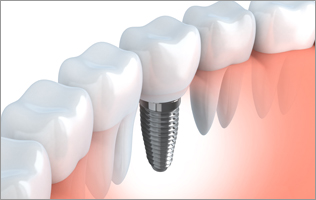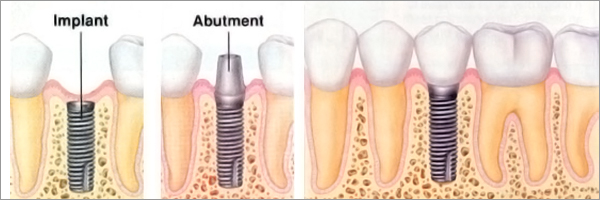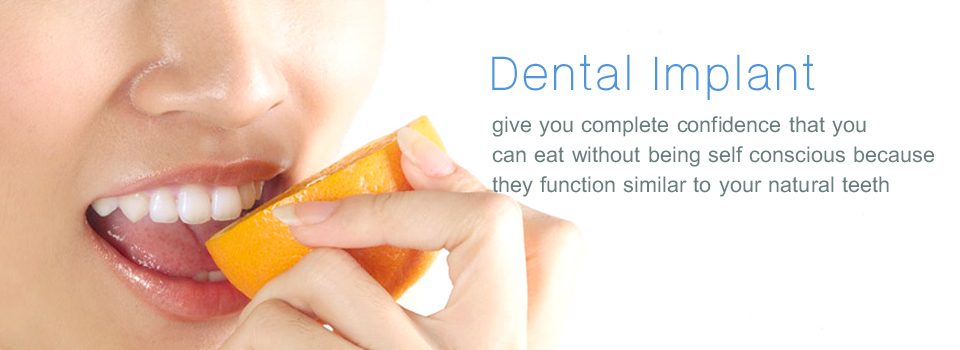Dental Implant
Dental implants are a recent technology used for replacing missing teeth with a most natural look. The dental implant is a titanium screw that is surgically placed in the jaw. This implant eventually fuses with the bone around the jaw about two to six months after surgery. These implants can then be used to anchor crowns, bridges and dentures. Dental crowns can be made to cover the implant post. Many people who have implants for a comfortable and cosmetic fit use porcelain fused to gold crowns. This is the “high tech” solution and the most natural replacement to replace the lost tooth/teeth without harming the remaining teeth and soft tissue.

Patients can receive several benefits from doing the dental implant. Ideal results include restoration of normal appearance of the missing tooth/teeth. Patients can achieve considerable confidence during eating and talking. Also patients can enjoy the long term safety of replacing their lost teeth with dental implant.

Preoperative evaluation
Dental implant is not suitable for everyone. Patients are evaluated at a consultation appointment with respect to their jaw size, bone volume, quality and quantity of bone, also the condition of the opposing dentition. The anatomy of the front of the lower jaw is studied by using x-rays taken at varying angles. This evaluation is to ensure suitability for the tooth implant as the components for the treatment are all precision made prefabricated components. Therefore the size and shape of the jaw must comply with established criteria.
Treatment procedures
The first step is the placement of titanium implants to replace the lost teeth. These implants will remain covered underneath the gum for approximately 3-6 months for lower teeth and 6 months for upper teeth. During this time, the implants should fuse to the bone.
The second step of the procedure involves uncovering the implants and attaching a post to each implant. This completes the foundation on which the new teeth will be placed. In some instances, the surgeon may decide to place the posts at the time of surgery.
The final step is the placement of new teeth by the dentist. With techniques that ensure optimal size, shape, color and fit, the replacement teeth should blend with the patient’s facial characteristics while providing support needed for natural appearance.






